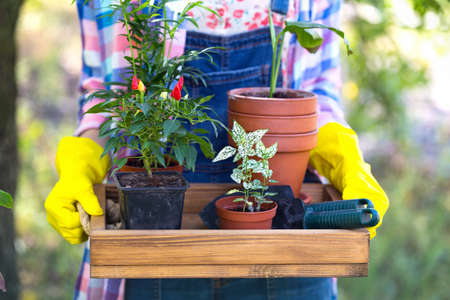1. Understanding the Basics of Sustainable Gardening
Designing a sustainable garden is all about working with nature, not against it. Whether you have a small backyard or a spacious lot, understanding the key principles of eco-friendly gardening will help you create a green space that’s good for both your home and the planet.
What Is Sustainable Gardening?
Sustainable gardening focuses on creating a self-sufficient landscape that uses natural resources wisely and minimizes environmental impact. This type of gardening encourages practices that conserve water, build healthy soil, attract beneficial wildlife, and reduce waste.
Core Principles of Eco-Friendly Gardening
Here are the foundational elements to consider when designing a sustainable garden:
| Principle | Description |
|---|---|
| Water Conservation | Use drought-tolerant plants, install rain barrels, and practice drip irrigation to minimize water use. |
| Soil Health | Add compost and organic matter to enrich soil naturally, improving drainage and plant nutrition. |
| Biodiversity | Grow a variety of native plants to attract pollinators and beneficial insects while supporting local ecosystems. |
| Minimal Chemical Use | Avoid synthetic pesticides and fertilizers; instead, use natural alternatives like neem oil or companion planting. |
| Waste Reduction | Compost kitchen scraps and yard waste to recycle nutrients back into your garden. |
The Role of Native Plants
Choosing plants native to your region is essential in sustainable gardening. These plants are adapted to local climate and soil conditions, which means they require less water and maintenance. Plus, they provide food and shelter for native birds, bees, and butterflies.
Benefits of Using Native Plants:
- Lower water usage
- Natural resistance to pests and diseases
- No need for chemical fertilizers or pesticides
- Support for local wildlife populations
The Importance of Healthy Soil
Your garden’s success starts with the soil. Healthy soil is full of microorganisms that help break down organic material and deliver nutrients to plants. You can improve soil health by adding compost regularly, avoiding over-tilling, and using mulch to retain moisture and suppress weeds.
Create a Balanced Ecosystem
Sustainable gardens thrive when all parts work together. Encourage beneficial insects like ladybugs and bees by planting flowers such as lavender or yarrow. Avoid monocultures (planting only one type of plant) as they’re more susceptible to disease—diversity builds resilience!
Quick Tip:
If youre just getting started, begin small. Choose one area of your yard to transform using these sustainable practices before expanding across your entire landscape.
2. Choosing Native and Drought-Tolerant Plants
One of the easiest and most effective ways to create a sustainable garden is by choosing native and drought-tolerant plants. These types of plants are naturally adapted to your local climate, which means they require less water, fewer chemicals, and less maintenance—perfect for beginner gardeners who want an eco-friendly yard without the extra work.
Why Native Plants Matter
Native plants are species that have evolved in your region over time. Because theyre used to the soil, rainfall, and local pests, they tend to thrive with minimal intervention. They also help support local wildlife like bees, butterflies, and birds by providing natural food sources and habitats.
Benefits of Native Plants:
- Low Maintenance: Less need for fertilizers or pesticides
- Water Efficient: Thrive on natural rainfall
- Eco-Friendly: Promote biodiversity and healthy ecosystems
Drought-Tolerant Plants: Save Water Without Sacrificing Beauty
Drought-tolerant plants are ideal for areas prone to dry weather or water restrictions. Many of these plants are not only tough but also beautiful, adding texture and color to your garden while reducing water use.
Common Drought-Tolerant Plant Options:
| Plant Name | Type | Main Benefit |
|---|---|---|
| Lavender | Shrub/Flowering | Aromatic, attracts pollinators |
| Sage (Salvia) | Herb/Flowering | Drought-hardy and colorful blooms |
| Coneflower (Echinacea) | Perennial Flower | Tolerates heat and attracts butterflies |
| Ground Cover/Flowering | Tough plant with vibrant flowers | |
| Annal Flower | Adds bright color with low water needs |
How to Find the Right Plants for Your Area
Your local nursery or cooperative extension office can help you identify which native and drought-tolerant plants are best suited for your region. You can also use online tools like the USDA Plant Hardiness Zone Map to determine what grows well in your zone.
Tips for Beginners:
- Select a variety of plant types—flowers, shrubs, grasses—for visual interest and ecological balance.
- Avoid invasive species that may harm local ecosystems.
Selecting the right plants from the start helps reduce your environmental impact while making gardening easier and more rewarding. It’s a win-win for both you and nature!

3. Efficient Water Management Techniques
Using water wisely is a key part of designing a sustainable garden. Not only does it help reduce your water bill, but it also supports healthier plants and reduces waste. Here are some beginner-friendly techniques to manage water efficiently in your eco-friendly landscape.
Drip Irrigation: A Smarter Way to Water
Drip irrigation delivers water directly to the base of each plant through a system of tubes and emitters. This method minimizes evaporation and runoff, making it much more efficient than traditional sprinklers.
Benefits of Drip Irrigation:
- Reduces water waste
- Keeps foliage dry, helping prevent disease
- Saves time and energy with automatic timers
Rainwater Harvesting: Use What Nature Provides
Catching rainwater in barrels or tanks is an easy way to collect free water for your garden. You can connect your downspouts to rain barrels and use the stored water during dry spells.
Basic Rainwater Harvesting Setup:
| Component | Description |
|---|---|
| Gutter System | Catches rain from your roof |
| Diverter or Filter | Keeps debris out of the barrel |
| Rain Barrel or Tank | Stores collected rainwater |
| Nozzle or Hose Connection | Makes it easy to water your plants |
Add Mulch to Retain Moisture
A layer of mulch around your plants helps keep the soil moist by reducing evaporation. It also suppresses weeds and improves soil quality over time.
Common Types of Mulch:
- Bark or Wood Chips: Great for flower beds and around trees
- Pine Needles: Ideal for acid-loving plants like azaleas
- Sustainable Straw: Works well in vegetable gardens
A combination of these smart watering techniques can make a big difference in how sustainable and healthy your garden becomes. With just a few simple changes, you’ll be conserving water while helping your plants thrive.
4. Composting and Organic Soil Enrichment
Composting is one of the easiest and most effective ways to support a sustainable garden. Instead of throwing away kitchen scraps and yard waste, you can turn them into nutrient-rich compost that feeds your soil naturally. This not only reduces the amount of waste sent to landfills but also helps you avoid chemical fertilizers, which can harm the environment.
Why Composting Matters
When food and garden waste end up in a landfill, they break down without oxygen, creating methane—a powerful greenhouse gas. By composting at home, youre helping to reduce this impact while giving back to your garden with healthy, organic matter that improves soil structure, moisture retention, and plant growth.
What You Can Compost
| Kitchen Waste (Greens) | Yard Waste (Browns) |
|---|---|
| Fruit and vegetable scraps | Dry leaves |
| Coffee grounds and filters | Small branches and twigs |
| Tea bags (non-plastic) | Shredded newspaper or cardboard |
| Eggshells | Sawdust (untreated wood) |
How to Get Started with Composting
- Choose a compost bin: You can buy a ready-made compost bin or build one yourself using wood pallets or wire fencing.
- Find the right spot: Place your bin in a shaded area with good drainage—ideally close to your kitchen for easy access.
- Add greens and browns: Mix kitchen scraps (greens) with dry materials like leaves or paper (browns) in roughly equal parts.
- Aerate regularly: Turn the pile every week or two to provide oxygen, which speeds up decomposition and prevents odor.
- Monitor moisture: Your compost should feel like a damp sponge—not too dry or soggy.
Using Finished Compost in Your Garden
Your compost is ready when it looks dark, smells earthy, and has no recognizable food pieces. You can use it in several ways:
- Soil amendment: Mix it into garden beds to improve fertility.
- Top dressing: Spread a layer around plants to retain moisture and suppress weeds.
- Lawn booster: Sprinkle it over grass as a natural fertilizer.
Quick Tips for Success
- Avoid adding meat, dairy, or oily foods—they attract pests and slow down decomposition.
- If your pile smells bad, add more browns like shredded paper or dry leaves.
- If its too dry and not breaking down, sprinkle some water as needed.
By incorporating composting into your gardening routine, youre creating a closed-loop system that benefits both your plants and the planet. It’s simple to start and incredibly rewarding as you watch your garden thrive with minimal environmental impact.
5. Eco-Friendly Garden Design and Materials
Creating a sustainable garden isnt just about the plants you choose—its also about how you design the space and what materials you use. Thoughtful planning can help reduce energy usage, promote accessibility, and create a natural balance in your outdoor area. Heres how you can make eco-friendly choices when it comes to garden layout and materials.
Smart Layout for Sustainability
A good garden layout should work with nature, not against it. Think about sunlight, wind direction, water flow, and how people will move through the space. Here are some beginner-friendly layout tips:
- Use native plants strategically: Place sun-loving plants where they get full exposure and shade-tolerant ones under trees or near structures.
- Create zones: Group plants with similar watering needs to conserve water.
- Design for efficiency: Place compost bins and rain barrels close to where youll use them most.
Sustainable Hardscape Options
Hardscape refers to non-plant elements like walkways, patios, and retaining walls. Choosing eco-conscious materials here can have a big impact on sustainability. Consider these options:
| Material | Sustainable Benefits |
|---|---|
| Permeable pavers | Allow rainwater to soak into the ground, reducing runoff |
| Reclaimed wood | Gives new life to old materials and reduces demand for new lumber |
| Natural stone | Durable and long-lasting with minimal processing required |
| Gravel or crushed stone | Low-maintenance, affordable, and helps with drainage |
Recycled and Upcycled Materials
You don’t need to buy everything new. Many great garden features can be made using recycled or upcycled materials:
- Old bricks or concrete pieces: Use them as edging or stepping stones.
- Pallets: Turn them into vertical gardens or compost bins.
- Glass bottles or cans: Create colorful borders or garden art.
Tip:
Check local salvage yards or community groups for free or low-cost materials that can be repurposed in your garden.
Designing for Accessibility and Energy Efficiency
An eco-friendly garden should be usable by everyone and support efficient living. Here’s how to integrate these ideas:
- Add wide paths: Make sure walkways are at least 36 inches wide for wheelchair access.
- Install solar lighting: Use solar-powered lights along paths and seating areas.
- Create shaded spots: Use pergolas, trees, or vines to naturally cool down seating areas during hot months.
Your Garden Can Do More Than Look Good
Sustainable design isn’t just trendy—it’s smart. By choosing eco-friendly materials and thoughtful layouts, you’re helping your yard thrive while also reducing waste and energy use. It’s all about working with nature instead of against it!


